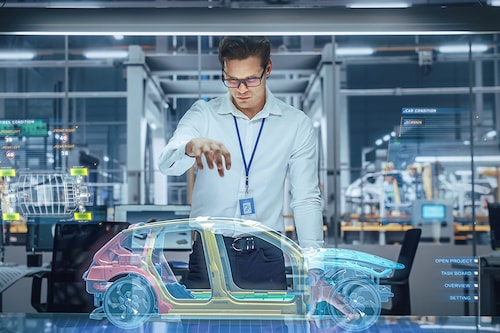Designers' dilemma: Embrace or evade the advancements of artificial intelligence
The sector is changing rapidly with the advent of so-called "generative" artificial intelligence, which designs objects based on textual descriptions


Machines might not be ready to replace humans just yet, but there"s no escaping the fact that they"re playing a growing role in certain fields. Design is one of them. The sector is changing rapidly with the advent of so-called "generative" artificial intelligence, which designs objects based on textual descriptions.
This technology allows anyone to slip into the shoes of a designer and imagine products that could become part of our daily lives. Eric Groza has tried his hand at this. The Dubai-based creative director decided to entrust the design of a fictional collaboration between the Swedish furniture giant IKEA and the California-based outdoor clothing brand Patagonia, to Midjourney, an artificial intelligence image generation program. He shared the results of his experiment on LinkedIn, in a post that spurred nearly 43,000 reactions. It features fictive creations such as camping chairs, an outdoor sofa and lamps that combine the visual identities of the two companies.
To come up with this capsule collection, Eric Groza launched the generation of 200 different images in Midjourney. In the end, he selected just eight that he believes illustrate both brands" commitment to sustainability and environmental protection. "For IKEA [this collaboration] would push the boundaries of their furniture to a new frontier. For Patagonia, it would showcase how their sustainable multifunctional comfort can be used indoors as well," he explained on LinkedIn.
However, once the right prompt is found, the machine does all the work. "It’s magic, but requires someone at the controls to hold its hand," said Eric Groza said in response to his LinkedIn post. The images of the IKEA/Pantagonia collaboration quickly went viral on the professional social network, where they drew mixed reactions. Some praised the technological feat, while others objected to the use of image-generating software in the design industry. The latter fear that some of the work usually done by designers will be delegated to AI. A concern shared by many professionals in the creative industries.
The design industry has been grappling with these questions for years, even if generative artificial intelligence programs are relatively recent. In 2018, the US software company Autodesk began offering an "iterative design" service within its Netfabb Ultimate product design software. Here, the user specifies requirements such as the material used or the production method, which the machine then takes into consideration to come up with ideas. The user can then choose from the options available, or adapt the request until the desired result is obtained.
Artificial intelligence is already being used to design many objects. NASA researchers have used it to design optimized parts for various projects, including the Mars Sample Return space mission, which will bring back to Earth soil samples taken from the Red Planet by the Perseverance rover. These metal structures have the advantage of being much lighter than those usually designed by humans and of supporting higher structural loads. They are also designed much more quickly, which significantly reduces manufacturing time. "You can perform the design, analysis and fabrication of a prototype part, and have it in hand in as little as one week," explains Ryan McClelland, a research engineer at the Goddard Space Flight Center, in a statement. "It can be radically fast compared with how we’re used to working."
But, make no mistake, the designer"s expertise remains essential to achieving a satisfactory final result. "Human intuition knows what looks right, but left to itself, the algorithm can sometimes make structures too thin," said M. McClelland. He adds: "The algorithms do need a human eye."
First Published: Mar 18, 2023, 08:54
Subscribe Now